Coming off of 2014’s inFamous: Second Son, Sucker Punch went hard to work on what would be the studio’s next game, Ghost of Tsushima. This game was going to be Sucker Punch’s most ambitious project yet, and with that came new challenges. The game’s audio director, Brad Meyer, told me that the team wanted Ghost of Tsushima to act as a sort of time machine. When playing the game, the intention was to transport players back in time to make it feel like they were assuming the role of a samurai in feudal Japan.
“Our next task was deconstructing the gameplay to figure out how we could make music work dynamically,” said Meyer, “to keep pushing this sense of being in an ancient time and far-off place while also reacting to the hero journey.”
The inFamous games were all in single cities, so one of the challenges was trying to develop the sound effects and music for the entire island of Tsushima while not having to increase the size of the overall team working on the game. This is where PlayStation stepped in to support Sucker Punch. One of the things that carried over from the development of inFamous: Second Son was the amount of source recording, including foley, combat sounds, props, nature sounds, and UI elements.
However, one crucial difference between inFamous and Ghost of Tsushima lies in the tone. The latter was much more grounded compared to the former’s larger-than-life aesthetic. “This is not a fantastical game, so rather than making things sound over the top as you do in a more exaggerated play space, we decided to pull the reins in a bit and keep things fairly literal,” explained Meyer.
For Jin’s katana, as well as his different tools like the wind chime, Sucker Punch experimented with all kinds of materials. To portray the sound of blades clashing, the team banged, scraped, and swung different types of metal together, as well as cut up a bunch of vegetables with different blades. Jin also has a variety of tools under his belt for combat. For instance, the sounds from his wind chime come from an actual furin, which is a type of Japanese wind chime.
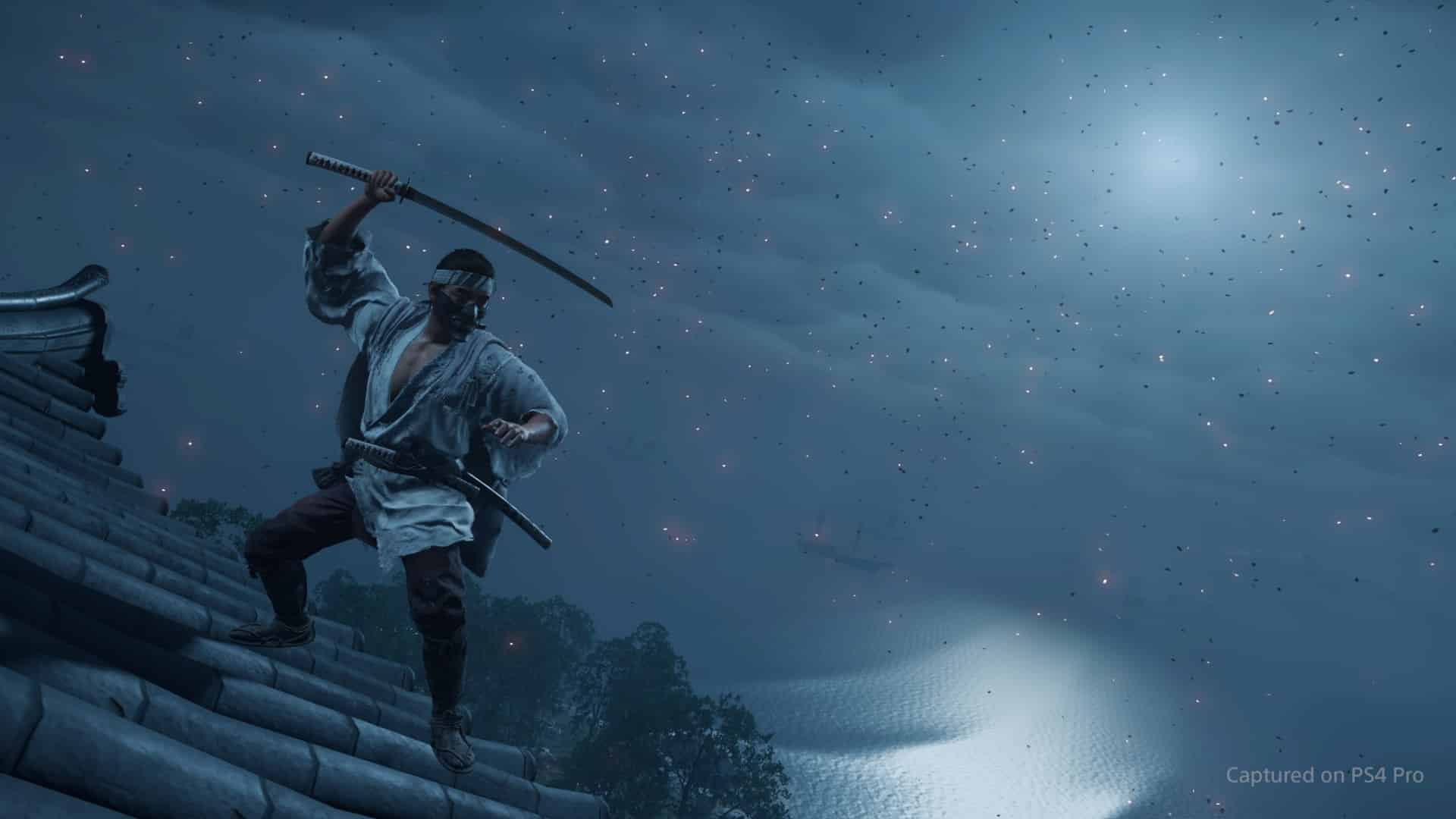
Not only were the actual sound effects of Jin’s weapons important, but they also factored into the minute-to-minute gameplay and music as well. Combat sounds such as swinging Jin’s katana or firing an arrow from his bow are quieter when enemies aren’t around. The combat isn’t the priority here, so these sorts of sound effects are deemphasized in favor of other sounds in the surrounding area.
If Jin comes across an NPC who’s playing an instrument, then the volume of the exploration music will be suppressed. However, if Jin gets into a fight, then the combat music will drown out the sounds coming from the NPC’s instrument.
“We do a lot of balancing between the diegetic (in-world) music and the (musical) score so they don’t compete,” Meyer said. He continued, “The whole process of mixing the game is this balancing act of making sure the right things are at the right volume throughout the experience. It’s a huge challenge due to the interactive nature of games.”
Ghost of Tsushima’s music system was initially based on that of inFamous: Second Son. In the 2014 game, depending on what types and number of enemies were attacking, the combat music escalated among three different states of intensities. Over time through the development of Ghost, the music became much more non-linear and variable compared to Second Son’s that was more straightforward, with exploration and combat music. However, because of Ghost’s additional gameplay mechanics, such as Standoffs and the Ghost Stance, there were now more states that needed to be integrated seamlessly into the open world’s exploration music.
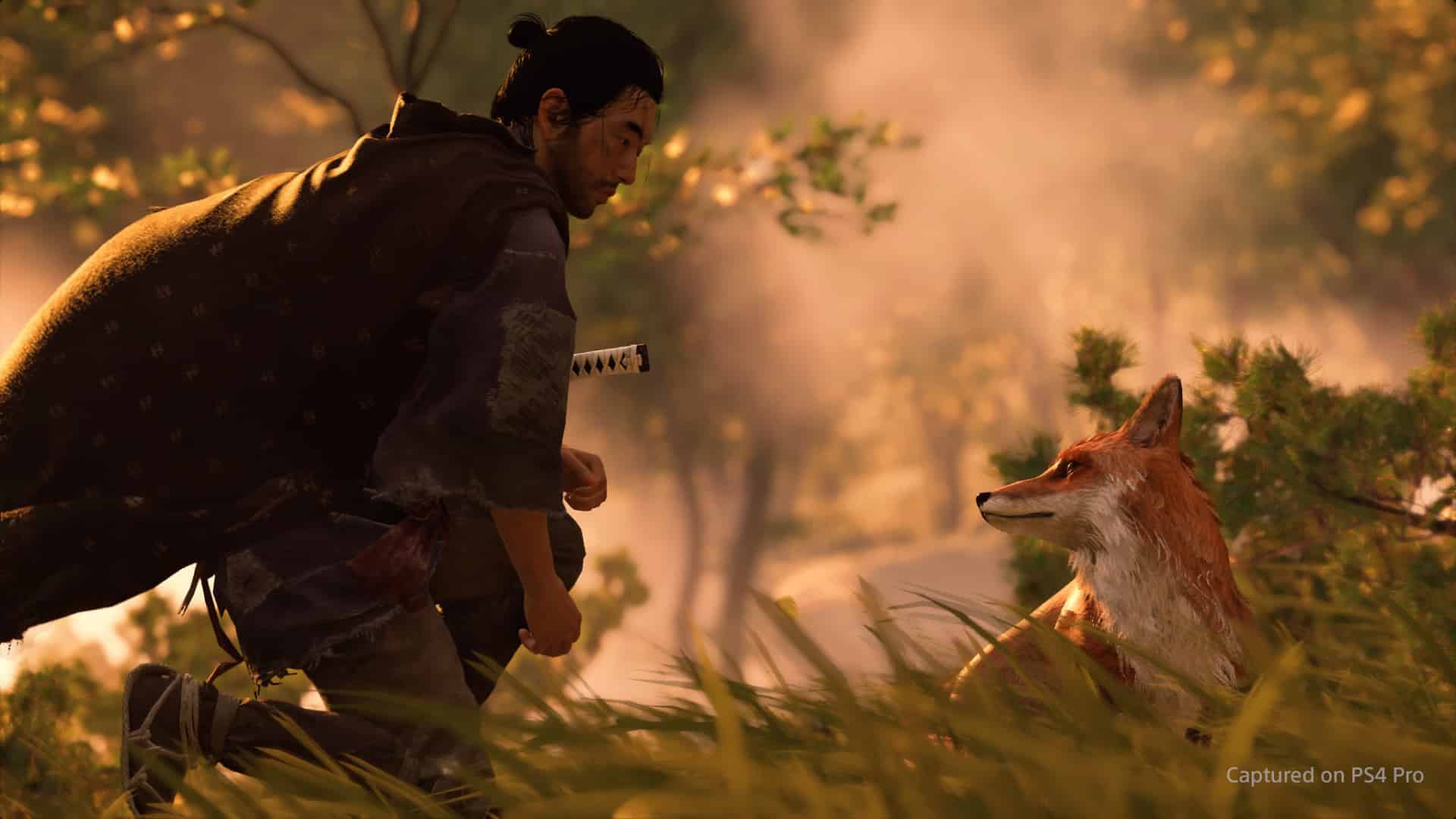
When it comes to the authenticity of Ghost of Tsushima’s score, Sucker Punch heavily researched Japanese instruments and traditional musical styles prevalent during the game’s time period, like Gagaku, Buddhist chanting, and the biwa-hoshi. The studio also employed historians and cultural consultants to help throughout the game’s development, including translating lyrics from the writing team into Japanese.
Sucker Punch additionally had to make sure its intentions wouldn’t be misinterpreted. Creating a game about a different culture means having to show genuine appreciation for it, as well as making sure everything makes sense culturally. Meyer explained, “We were also very aware and careful about where such content could be used. It wasn’t just, ‘Hey, this sounds cool. Let’s put it in this scene!’”
Ghost of Tsushima’s score was handled by two composers, Ilan Eshkeri and Shigeru Umebayashi. Meyer told me that PlayStation approached Eshkeri because of his previous work on movie scores, particularly 47 Ronin and Coriolanus. Regarding the former, the team was impressed with Eshkeri’s unique approach to implementation, including how he was able to take Western instruments and fit them into a Japanese setting. “We knew we would be employing both Western and traditional instruments, and if we were going to have a Western composer, they would need to understand these nuances.”
Eshkeri confirmed that it had been those two film scores that got PlayStation to reach out to him. “I ended up writing a very unusual score (for Coriolanus). (PlayStation and Sucker Punch) were really interested in that. That blew me away. You’re such a huge blockbuster; why are you interested in this tiny art house genre? That really got me interested.”
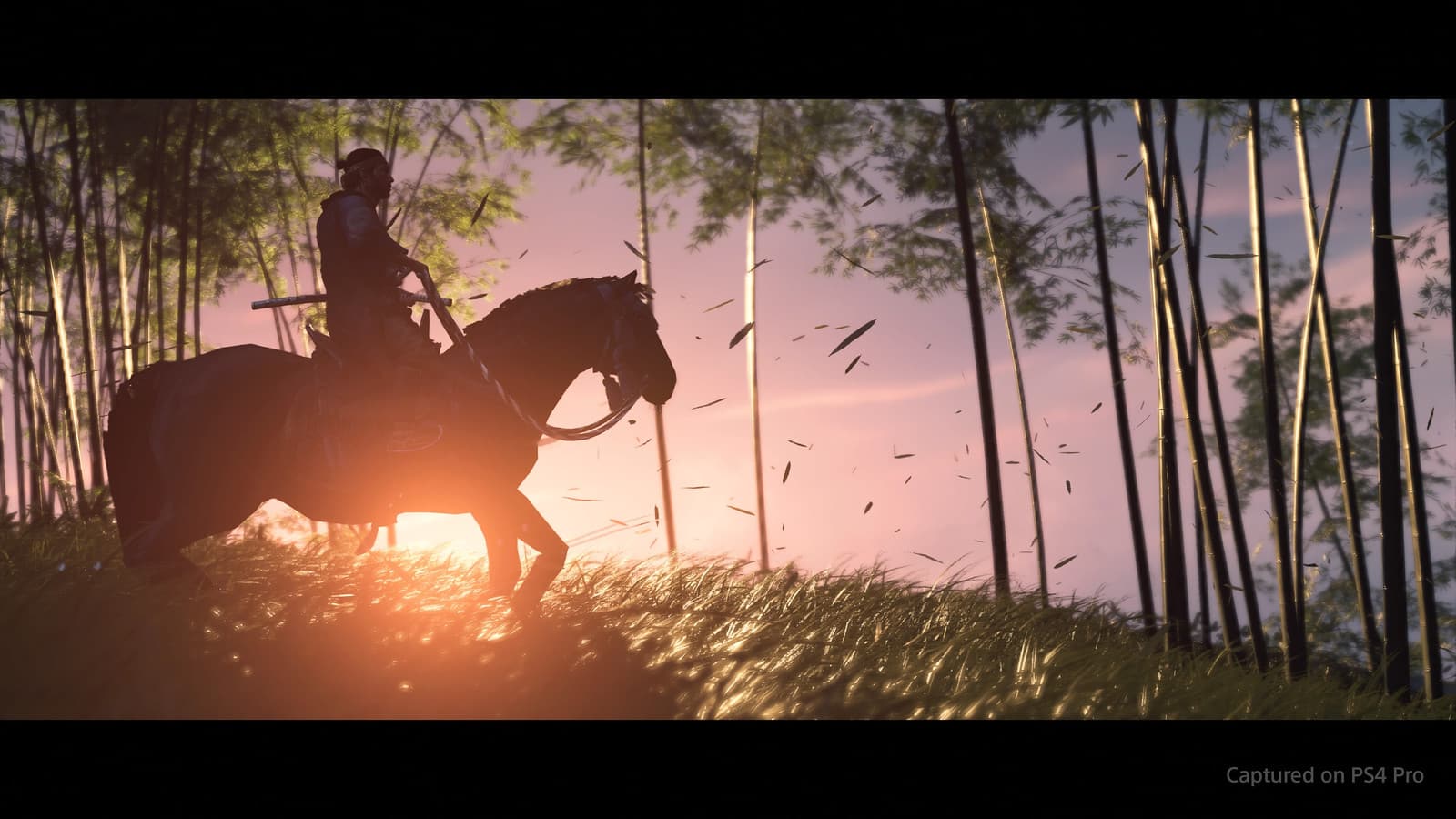
Meyer agreed that the score for Coriolanus sounds like nothing else. It wasn’t like most film and game scores, with its use of space, percussion, and a unique approach to traditional instruments. Sucker Punch wanted Ghost’s score to have many of these same characteristics to fit the game’s time period and Jin’s journey, while also having its own identity.
However, Eshkeri explained that samurai games, or fighting games in general, weren’t really in his wheelhouse. Ultimately, it was Ghost of Tsushima’s narrative that convinced Eshkeri to hop on board. He had a meeting with Sucker Punch and PlayStation where they explained Jin’s story, and he was blown away by what he had heard.
“But what’s so brilliant about Ghost is that Jin is in this emotional conflict throughout the entire game,” said Eshkeri. “In that exact place where you have that friction, that’s where the depth and the pain and the emotions are. I was so moved by that.”
He did quite a bit of research into Japanese culture, folk music, and instruments. He worked really hard on the harmonies and scales for the game, including meeting up with other masters of Japanese music and learning from them.
Even Meyer took notice of Eshkeri’s dedication: “At the first recording session in London, I realized he had written every piece we recorded in one of a handful of traditional Japanese scales. He’d definitely done his homework, and it showed.”
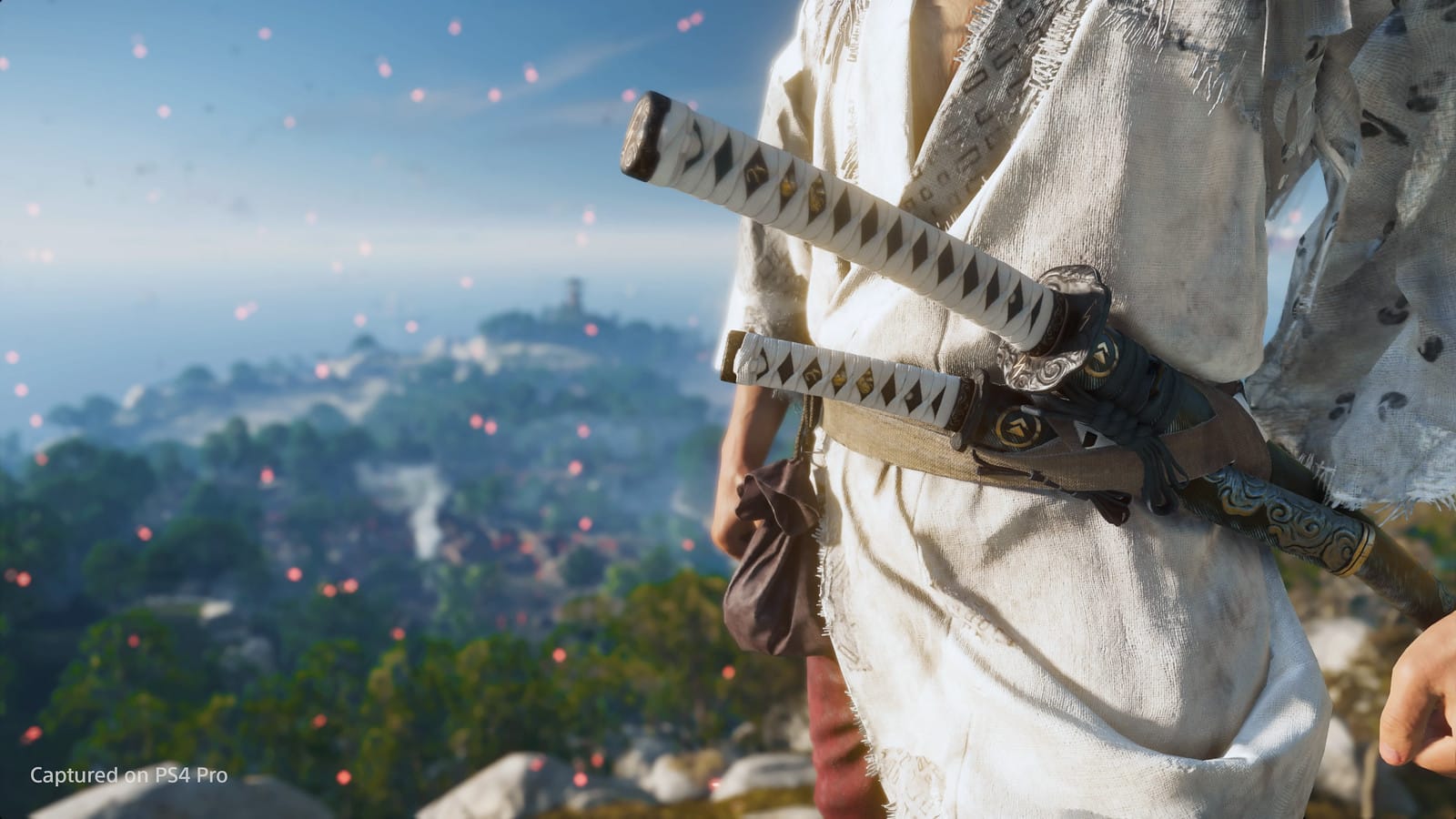
Eshkeri also mentioned that composing for Ghost of Tsushima was much different than his work on other Japanese or Asian-inspired media like 47 Ronin or Ninja Assassin. Even though Ninja Assassin clearly had Japanese influences, it was heightened reality, a big contemporary adventure. 47 Ronin had Japanese elements as well, but it didn’t require the kind of authenticity that Ghost of Tsushima did. It was a huge fantasy adventure with dragons and witches, opposed to Ghost’s much more literal and grounded setting.
He never felt pressure to provide a similar score from his previous works. Eshkeri said that, for Ghost of Tsushima, there are some similarities to Hollywood films, like big symphonic moments, but the game just required a different application.
In the end, Eshkeri concluded that people in the video game industry are open-minded and experimental. He loved how Sucker Punch and PlayStation allowed him to try out different ideas and just let him work his own magic.
As for Umebayashi, or “Ume,” it was definitely important and helpful to have a Japanese composer contribute to the game’s score. Ume’s previous work on Chinese films like Zhang Yimou’s Curse of the Golden Flower and House of Flying Daggers caught Sucker Punch’s ears. The studio thought that having something distinctively Japanese in a similar fashion could complement the dramatic camera angles and art direction of the game. Additionally, Ume’s score on the film Onmyōji provided direction on what a game set in Japan would sound like.
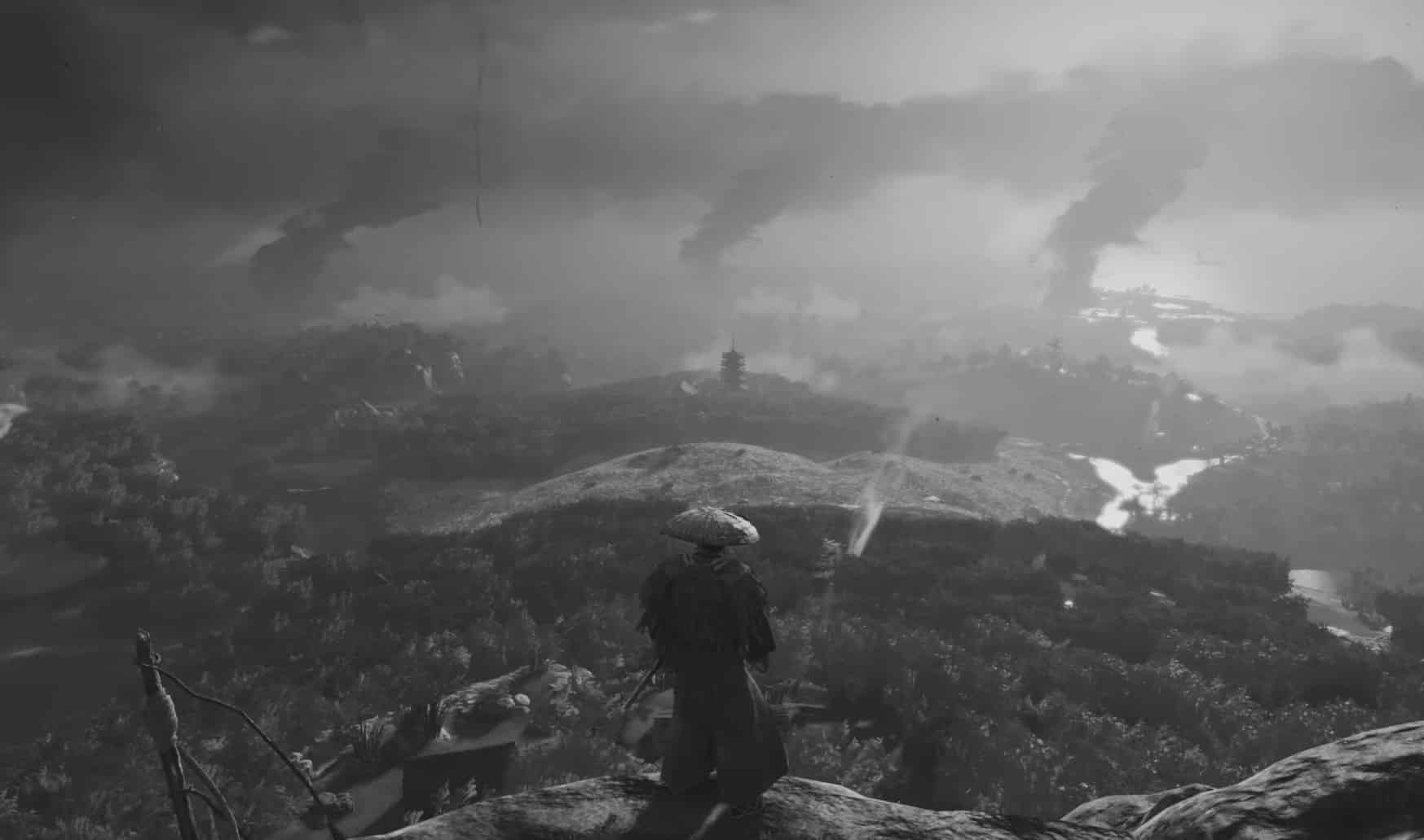
Ume told me that under any circumstances, he approaches composing with a free mind. He doesn’t always draw on his previous works for inspiration. “There were times where my past work benefited me, and there were times it got in the way,” he said. “I would say it really helped me pick the instruments that I ended up using.”
Sucker Punch put quite a bit of effort into authenticity when it came to Ghost of Tsushima. This can be attributed to many factors, including the extensive amount of research into the setting and the performances put on by the actors for the characters. Sound design and music are oftentimes more subtle factors, but ultimately no less important. The audio direction of the game plays a huge part in providing the appropriate atmosphere for players to immerse themselves in its world.
“We were lucky to have incredible casts for both English and Japanese,” said Meyer. “With strong music complementing their performances, we think the themes and acting really came through well.”

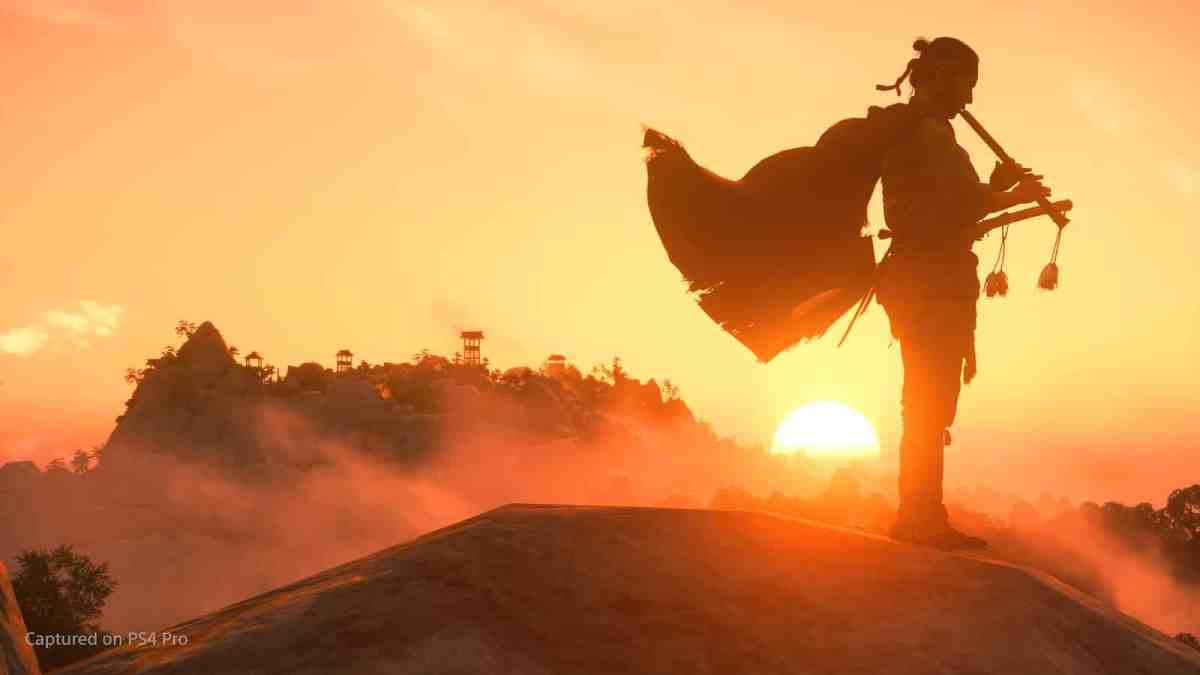
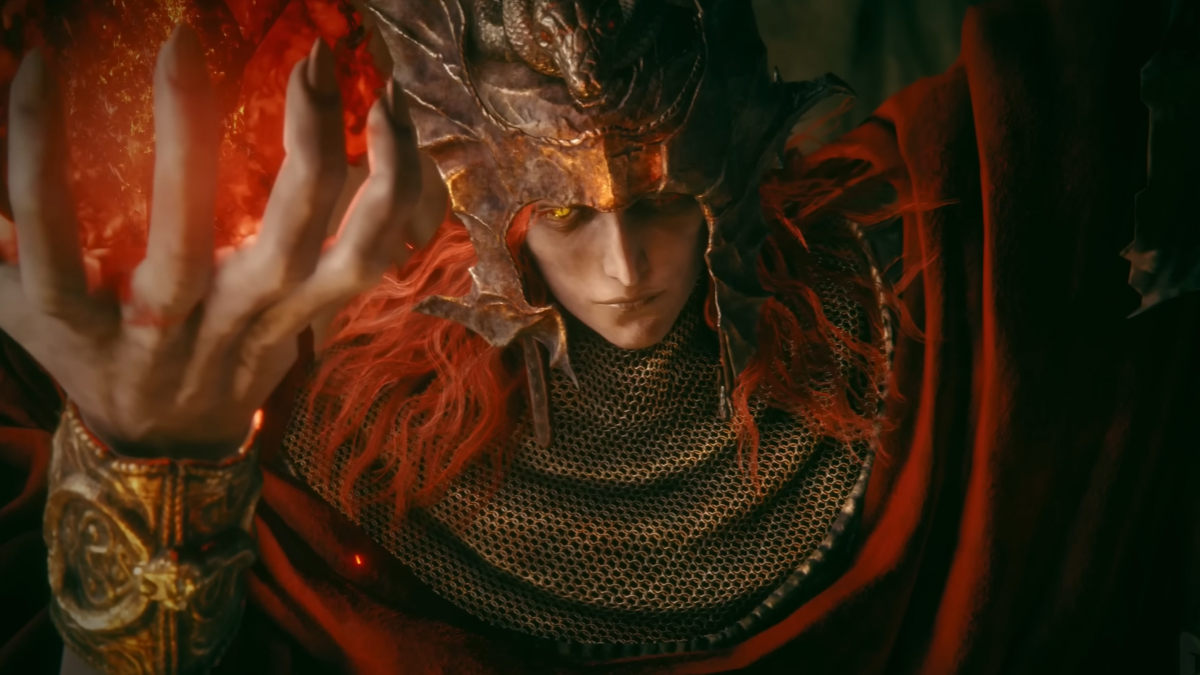



Published: Jul 29, 2020 11:00 am